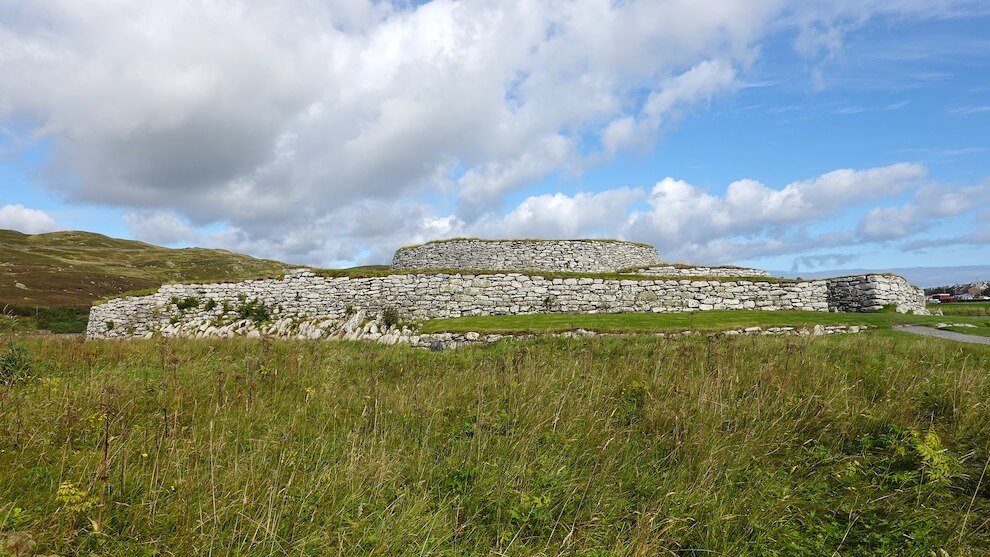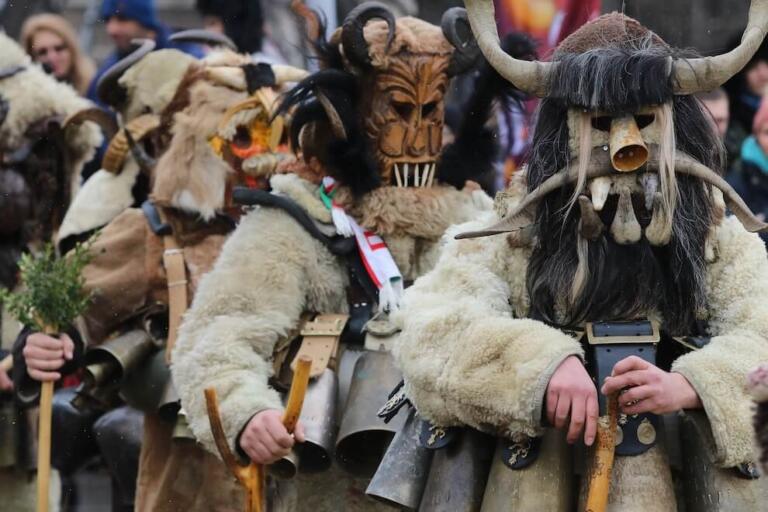In the chilly wet landscape of Scotland, far North, two very distinct archipelagoes dot the Atlantic Ocean and hold Jarlshof and Skara Brae. They are called the Northern Islands and are made up of the Orkney and Shetland archipelagoes.
Windswept and at the mercy of the northern bitter winter bite, these little islands might not even look inhabited, yet there have been people living there ever since antiquity.
Bronze age
On the island of Shetland, a man walks by an animal, tethered to whalebone, and goes into a stone hut. The stones are nestled against the earthen walls of a hole dug into the ground. The climate here is ruthless.
Wind and harsh cold are the reason the dwellings were built into the ground or against middens, to provide shelter and preserve heat. The man begins his work at the smithy in the stone hut, with his many molds for swords, axes, pins, or knives.
It is the Bronze Age, about 800 BCE to be exact, in a place known as Jarlshof. The molds, along with a knife, would later be uncovered by archaeologists, studying the island and the people that once took up residence there.
Iron age
Later on, in the Iron age, people from the Scandinavian peninsula looked over the sea and began to sail to Scottland. Some remained on Shetland and Orkney islands. They are known as the Picts, and they built stone houses similar to the bronze age ones, but on the surface, and on top of the previous dwellings.
Some huts had underground storage areas; one, in particular, had a storage area dug under the hearth to keep grain dry. The Pictish people living here built a tall round hallow tower, commonly called a Broch in Scottland, that had collapsed and been reused as support for more wheelhouses made of stone.
The purpose of this tower is still up for debate, be it for defense or storage. Some other artifacts such as stones carved with Pictish symbols have been found on the island, further linking them to the settlement.
Viking age
Norse people came along in the 9th century, again some staying on the Northern island, and building on the foundations of previous occupiers. Their houses are most distinct as they are the customary longhouses seen in many places they inhabited over the years. On Shetland island, a total of 7 longhouses have been uncovered.
Vikings left their mark on this place, with loom weight for weaving wool, Viking ship carvings on slate, and a building that looks like it might have been used as a sauna.
Medieval age
The medieval Scottish rule of the Shetland island marked its presence with a medieval farmhouse. In the 16th century, the farmhouse got converted into a fortified house, under the 1st Earl of Orkney, Robert Stewart.
Sir Walter Scott saw that house, and wrote it in his novel The Pirate. He used the name Jarlshof, to refer to the house; the name by which it is known now. The structure was abandoned in the 17th century.
Abandoned shores
Orkney island to the South has the Skar Brae settlement. Here, people left pottery with distinct grooved designs. As on Shetland island in the bronze age, houses here have the same look and build. Unlike Shetland, settlers did not linger long, as inhabitants left after about 6 centuries.
Many artifacts found here paint a picture of the neolithic lifestyle. Stone boxes glued with clay used to preserve the grain, and round huts similar to one another. Even the stone furniture looked standardized. It was believed that a community of astronomers that chartered the stars, inhabited the settlement. But evidence of pastoral and agricultural activity abound and disproves the claim.
There are also theories about the reason for the abandonment of the settlement. There are claims of a catastrophic storm that drove people away. Some also claim it may have been a Pompeii-like calamity. But there is no physical evidence. No bodies or a huge downpour of rain in a small span of time, disproves the disaster theory. There simply is no explanation for the abandonment of the place as of yet.
Both settlements of Skara Brae and Jarshof had hidden away from sight. Until a winter storm in the 19t century ravaged the Scottish country. It killed a considerable number of people and unearthed the ruined settlements from the past.
The islands are inhabited by modern people today but with the added commodities of running water and heat at the switch of a button. In contrast to the many waves of people of the ancient past. Skara Brae and Jarlshof stand as a remarkable testament to human survival skill away from mainland populated areas.



Leave a Comment